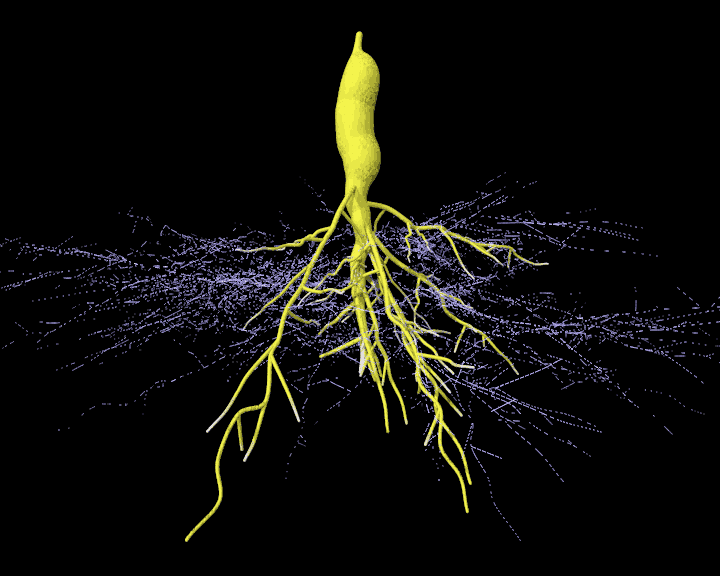There is a debate whether synthetic fertilizers impact soil biology in a negative way. I think it’s a discussion worth having but it doesn’t tell the real story that needs to be made clear. In defense of synthetic fertilizers, 48% of the human population would not exist today without chemical fertilizers. It defeated hunger in the world. It has become the standard of agriculture for the last 70 years, brought about by nitrogen production for weapons used in WWI and WWII.
Unfortunately, this 70-year experience has come at a very high price. We’ve experienced decreased fertility, increased diseases, a sharp rise in greenhouse gases and compacted soils worldwide. We’ve witnessed increased hazards to human health (e.g. cancer) and the environment. And the continued use of chemical fertilizers poses serious challenges to balanced and sustainable crop growth. Let me explain why.
Here are the main points. Roots don’t gather the majority of water and nutrients for the plant, fungi do. There is a long-standing symbiotic relationship. Hyphae – the long filaments that make up fungi — grow where roots don’t go or grow. Roots are like elevator shafts and the hyphae are like the halls, electrical wiring and plumbing that permeate the building. The hyphae move water and nutrients to the roots for uptake. The roots in turn exude sugars photosynthesized by the plant that nourish the fungi (as well as a suite of beneficial microorganisms in the soil). Without the hyphae or arbuscular mycorrhizal fungi (AMF) the roots can’t access nearly enough of the minerals the plant needs.
In addition, AMF produce glomalin to coat hyphae to keep water and nutrients from getting lost on the way to and from the plant. Glomalin a sticky glycoprotein that also glues sand, silt, clay, and organic matter together, to create soil aggregates. This creates what farmers and gardeners call tilth. Not only is glomalin an important soil glue, but it helps produce soils capable of sequestering carbon at the highest level. Soils in this category are closely bound and will not leach or erode. You can only fix carbon in the soil if you have fungal hyphae enmeshing soil aggregates and bridging the spaces between.
The plant-fungi relationship is severely damaged when synthetic fertilizers are introduced. Synthetic fertilizers force fungi out of the soils. Then you get plants under threat of malnutrition and even more dependent on fertilizers. You also severely reduce soil organic matter (SOM), with the soil giving up carbon in the form of CO2. As so often happens, a quick fix can be a short-term benefit but highly detrimental in the long term, in this case leading to degraded and depleted soils that result not only in declining return on investment but also damage to the entire ecosystem.
Andaman Ag has a number of fungal based products that can help restore balance to your soils. Pacific Gro oceanic fish hydrolysate is just one of them. Please contact me for details.
I want to acknowledge Pius Floris, President of Plant Health Cure BV, for his insights on this subject.





